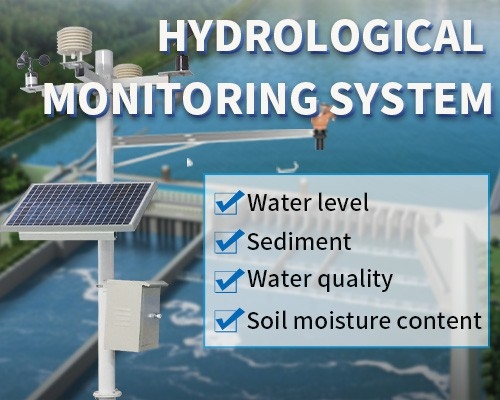In the realm of environmental science and public health, the accuracy of water quality monitoring is paramount. Clean and safe water is a fundamental necessity for human survival, and any compromise in its quality can lead to severe health implications and ecological disruptions. To address this critical need, researchers and technologists have been relentlessly working on improving water quality detection methods. Recently, a groundbreaking new water quality detector has been developed, promising unprecedented levels of accuracy and efficiency in monitoring water bodies.

The Evolution of Water Quality Monitoring
Traditional water quality monitoring has relied on a combination of chemical tests, microbiological analyses, and physical measurements. These methods, while effective to some extent, are often time-consuming, labor-intensive, and may not provide real-time data. With the advancement of technology, however, the landscape of water quality monitoring is undergoing a transformative shift. Modern detectors leverage advanced sensors, data analytics, and artificial intelligence to deliver rapid, accurate, and continuous monitoring of water quality parameters.
Introducing the New Water Quality Detector
The latest addition to the arsenal of water quality monitoring tools is a state-of-the-art detector that integrates cutting-edge technologies to enhance monitoring accuracy. This innovative device is equipped with a suite of high-sensitivity sensors capable of detecting a wide range of contaminants and parameters, including dissolved oxygen, pH levels, turbidity, heavy metals, and microbial contaminants.
One of the standout features of this new detector is its ability to provide real-time data. Traditional methods often require samples to be collected and transported to a laboratory for analysis, which can delay the availability of results. In contrast, the new detector transmits data instantly, allowing for immediate response to any detected anomalies. This real-time monitoring capability is particularly crucial in emergency situations, such as water contamination incidents, where swift action can prevent widespread harm.
Advanced Sensor Technology
The sensors incorporated into the new water quality detector are a significant leap forward in terms of sensitivity and specificity. For instance, the dissolved oxygen sensor uses optical technology to measure the concentration of oxygen in water with high precision. This is critical because dissolved oxygen levels are a key indicator of water health; low levels can signal the presence of pollutants or excessive algae growth, which can deplete oxygen and harm aquatic life.
Similarly, the pH sensor employs advanced electrochemical technology to provide accurate readings of the water’s acidity or alkalinity. pH levels can affect the solubility of contaminants and the toxicity of certain substances, making it an essential parameter to monitor.
The turbidity sensor, on the other hand, uses light scattering technology to measure the clarity of water. High turbidity can indicate the presence of suspended particles, such as sediment, algae, or pollutants, which can impact water quality and treatment processes.
Heavy Metal and Microbial Detection
In addition to basic water quality parameters, the new detector is also capable of detecting heavy metals and microbial contaminants. Heavy metals, such as lead, mercury, and arsenic, are toxic and can pose serious health risks if present in water. The detector uses spectroscopic techniques to identify and quantify these metals with high sensitivity.
For microbial detection, the device employs advanced biosensors that can detect the presence of pathogens, such as Escherichia coli (E. coli) and other bacteria, viruses, and parasites. These biosensors work by recognizing specific biomarkers associated with the microorganisms, providing a rapid and accurate means of assessing microbiological water quality.
Data Analytics and Artificial Intelligence
The new water quality detector is not just a collection of sensors; it is a sophisticated system that integrates data analytics and artificial intelligence to enhance monitoring accuracy. The device collects vast amounts of data from its sensors and uses algorithms to analyze and interpret this information. This enables the detector to identify trends, anomalies, and potential risks in water quality, providing valuable insights for water managers and public health officials.
Furthermore, the detector can be connected to a cloud-based platform, allowing for remote monitoring and data sharing. This means that water quality data can be accessed in real-time from anywhere in the world, facilitating collaboration and decision-making among stakeholders.
Benefits and Applications
The benefits of the new water quality detector are manifold. Its high accuracy and real-time monitoring capabilities enable early detection of water quality issues, allowing for prompt intervention and mitigation of potential risks. This can help protect public health, preserve aquatic ecosystems, and ensure the sustainable use of water resources.
The detector has a wide range of applications
from monitoring drinking water supplies and recreational waters to assessing the impact of industrial discharges and agricultural runoff on water quality. It can also be used in remote and underserved areas where traditional monitoring methods are not feasible.
Conclusion
The development of the new water quality detector marks a significant advancement in the field of water quality monitoring. Its advanced sensor technology, real-time data transmission, and integration of data analytics and artificial intelligence make it a powerful tool for ensuring the safety and sustainability of our water resources. As we face increasing challenges related to water scarcity, pollution, and climate change, this detector provides a much-needed solution for accurate and efficient water quality monitoring. With its help, we can better protect public health, preserve the environment, and secure a sustainable future for generations to come.